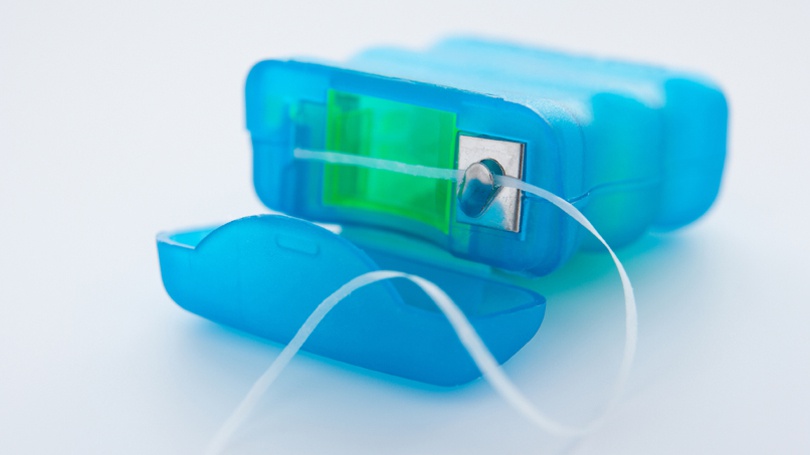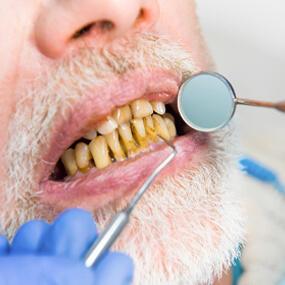How Modern Dental Floss Came to Be

How humans use tools has always set the species apart from the others. Humans have always had the drive to advance themselves and were using tools before they could communicate with language or writing. When we consider early humans and tools, we tend to think of stone axes and the like. But our ancestors also applied their ingenuity to oral care. Before the advent of toothbrushes, multiple human groups had come up with the concept of chew sticks to clean their teeth and prevent tooth decay.
The Original Toothpick
In addition to chew sticks made from twigs, anthropologists have found tiny sticks that were purposefully sharpened in order to get between the teeth. Some chew sticks were sharpened in this manner so that they served a dual purpose. While these toothpicks were rather crude, they would set a foundation for the interdental cleaning devices that would be invented later on.
Horse Hair as Floss
Anthropologists have also found clear evidence that early humans were regularly cleaning between their teeth due to grooves and other wear patterns found there. Historians also know that humans came upon the concept of floss naturally. They used horsetail hair as well as other coarse hairs, such as the bristles from boars. In fact, when the concept for the toothbrush began to emerge among humans, these hairs from horses, boars, and other animals served as the original toothbrush bristles.
The Arrival of Silk Dental Floss
The original silk dental floss was not created to be used as such. It was a waxed silk thread that was commonly used for hand sewing in the 1800s. A doctor in New Orleans—Dr. Levi Spear Parmly—had recognized that this thread would be ideal to use as dental floss. In 1815, he was recommending it to his patients, and the material was relatively inexpensive, and so the practice was readily adopted. In 1819, he published “A Practical Guide to the Management of Teeth.” In it, he recommended brushing twice a day and flossing daily. This helped to popularize flossing with a waxed silken thread.
Floss as a Commercial Product
Codman and Shurtleff manufactured an unwaxed silk floss and began selling and marketing it as dental floss in 1882. In 1898, Johnson & Johnson patented its own dental floss and made floss more widely available than it had ever been. Johnson & Johnson’s sterile sutures were already in widespread use, and there was leftover silk from the manufacturing process that up until this point had been discarded. The brothers decided to use that silk to create dental floss and began selling many different varieties.
How Nylon Replaced Silk
When World War II happened, the demand for silk went up due to parachute production and other wartime manufacturing, and the supply went down because imports from China and Japan were severely limited or nonexistent. It quickly became impractical to make silk dental floss because few could afford it.
Nylon had already been invented and would eventually be called the “fiber that won the war” due to how much it had supplanted silk during this time. It was Dr. Charles Bass who first had to idea to use it as dental floss. Dr. Bass is often called the father of preventative dentistry because he had gone to great lengths to spread awareness about the advice Dr. Parmly had published all those years ago.
Modern Dental Floss
Nylon dental floss became prevalent after the war, but it was still a one-size-fits-all kind of product. That would begin to change as dentistry advanced and companies sought to distinguish themselves and cater to niche customers. Dental floss was soon made from a number of different materials and available in various sizes and flavors. There is dental floss for young gums, wide floss for gapped teeth, waxed floss for tight teeth, and premeasured dental floss sticks for those who want to avoid the mess.
Still Excellent Advice
Drs. Parmly and Bass advised brushing twice a day and flossing daily. Interestingly enough, this is the modern recommendation from the American Dental Association as well. Children should establish brushing and flossing routines as young as possible, and adults should continue those routines throughout their lives in order to avoid gum disease and tooth decay.
See Your Dentist Twice a Year
Floss has a long and interesting history, and the modern consumer has many different flossing products available to them. Brushing twice a day and flossing daily is a great start, but it may not be enough. You should also schedule biannual visits to your dentist to have your teeth cleaned and examined. You can schedule your checkup with Jeffrey D. Clark, DDS, today. Call Scottsdale Cosmetic Dentistry Excellence at 480 585 1853.




